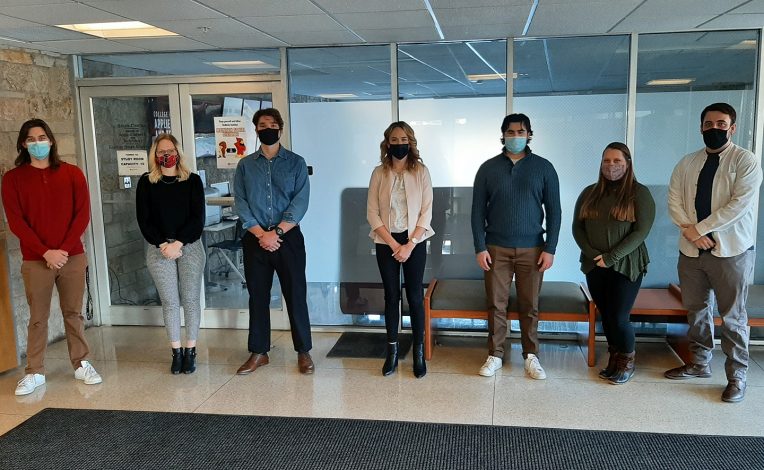Update: Illinois State’s Solar Cup team took home third place in their division during the U.S. Department of Energy Solar District Cup competition.
Seven Illinois State sustainable and renewable energy majors are ready to show some of the top minds in the field their creativity and ingenuity as they put the last touches on a massive undertaking.
“We really want to spread the word on campus about renewable energy and sustainability,” senior Katrina Keller said.
Keller belongs to a team of Illinois State students who have been selected as finalists for the U.S. Department of Energy Solar District Cup. Team members also include Katelyn Dunnagan, Austin Miller, Jacob Nihan, James Smith, Brittany Weber, and Oliver Wuebbels. They are competing against colleges across the country to create a comprehensive solar energy plan for a community. The Illinois State team has been assigned the University of Nebraska’s campus in Lincoln.
Keller serves as president of the Renewable Energy Society (RES), a registered student organization on campus that discusses relevant topics within the field and participates in hands-on projects related to sustainability and renewable energy. Recently, the group has created a solar-powered grill for the Office of Sustainability and collaborated with Sunnyside Community Garden to design a solar greenhouse.
Keller loves to compete and sought out opportunities to get the organization involved with undergraduate contests in the field. The coronavirus (COVID-19) pandemic also made it more difficult to get hands-on work projects, so a virtual competition was a way to create those experiences in a physically distanced world. During her research, she found that the National Renewable Energy Laboratory (NREL) had multiple competitions they were running for college students.
“They had several available, but I picked this design one because it seemed the most feasible for our experience and was something everyone in the group was interested in,” Keller said.
In October, the Illinois State team was sent information about the current energy usage of the University of Nebraska and got to work. They had about a month to create a project proposal to send back to NREL. The team used design software to create potential solar arrays for all 29 buildings within the district. To narrow their proposal, team members chose buildings they could cover at least 20 percent of its energy usage with solar.
“We chose that number sort of arbitrarily, but it seemed like it was enough energy to make a good impact, a good investment for them,” Weber said. “All of the panels and labor in our proposal would be covered by a power purchase agreement, which means the University wouldn’t have to pay anything upfront. For a public university that is a good route to go.”
The team’s initial proposal made the cut, and the team has spent the last four months preparing for the final competition. The team must deliver a final proposal to NREL by April 15, which is currently a 100-page document. From there, the team will present virtually to a panel of judges on April 25 with the winners announced the following day. The judges select the winners of each division, who then go on to present to their peers, faculty, and solar industry representatives who vote for an overall Industry Choice Award winner.
Preparing this massive amount of material has been a challenge for the team, but one the team has embraced head on. The members split up duties, with smaller teams working on financial analysis, design, energy distribution analysis, and a proposed timeline for the permitting and construction of the solar arrays.
“We can’t just slap a few solar panels on a roof and call it a day,” Keller said. “There has to be some methodology behind it. The panels can’t be too big or too small and they can’t negatively impact the existing electric grid.”
The final proposal has solar arrays installed on rooftops and parking garages as well as a newer type of solar array called an agrivoltaic system, which allows land to be used for both solar power production and agriculture. Some of the material needed to complete this project is outside the scope of what the average undergraduate student majoring in sustainable and renewable energy covers in their coursework. For that reason, the team has looked to Assistant Professor of Technology Dr. Matt Aldeman for guidance and support.
“We touch on a lot of these things, but this is a far more sophisticated project than we go into for our classes,” Aldeman said. “They’ve had to learn a lot. They’ve had to learn on the fly. Sometimes that is the best way to learn. I’ve encouraged them to do that, and they have done a fantastic job.”
The team feels confident about their chances of winning the competition. Win or lose, their biggest hope is that their performance puts a national spotlight on the sustainable and renewable energy program at Illinois State.
“I really want the recognition for this program that has brought me so much joy over the past three years. I love it so much,” Weber said.

